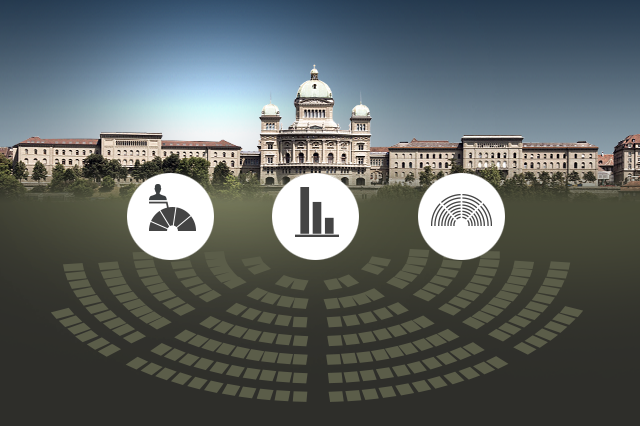Are the Greens a sustainable wave?
Political analyst Daniel Warner puts the “Green wave” dominating the Swiss election into perspective.
The “Green Wave” in the recent Swiss elections is most impressive. Together with the Liberal Greens, they have enough backing to potentially ask for a seat on the Federal Council (government), upsetting the Magic Formula dividing the seven executive seats on the Council among the traditional four ruling parties that has been in effect since 1959.

More
Swiss elections: Landslide Green gains tip parliament to the left
A most impressive wave. But, like all waves, the question is how sustainable it will be.
Looking to the United States as a reference since it is the forerunner of Swiss federalism: does anyone remember Jill Stein? In case you’ve forgotten, she was the Green Party’s nominee for president of the United States in the 2012 and 2016 elections and candidate for governor of Massachusetts in 2002 and 2010. In 2016, she was considered an alternative to mainstream candidates Hillary Clinton and Donald Trump. Stein received 1% of the national popular vote with over one million votes and finished a distant fourth in the election – a good result in a historical context, but overall, the Green Party has had no traction in the United States.
Will the Green Party in Switzerland be different? It could be, due to its relationship with two other parties. In Geneva, the Green candidate Lisa Mazzone successfully ran for the higher chamber, the Senate, with the Social Democrat Carlo Sommaruga. Their ticket promised to combine the ecological with the social. That could make a powerful combination in Bern, as their combined force could put pressure on the Magic Formula of seat distribution in the country’s government (Federal Council).
The other force that could align itself with the Greens on certain issues is the Liberal Green party. But as Ms. Mazzone said in a post-election interview, the Liberal Greens are liberal, and far to the right of the Socialist/Green tandem. Potential cooperation between the Green Party and Liberal Greens will be very limited.
In the end, the success of the Green Party may be ephemeral, like all waves. The influence of Swedish teen climate activist Greta Thunberg cannot be denied in mobilising attention to environmental issues and getting people to vote green. But despite large Swiss street demonstrations in favour of the environment, there was no increase in the number of voters – in fact, voter turnout dropped compared to 2015.
Although Greta has become a global phenomenon, her movement has yet to pass any concrete legislation. And not to forget that the majority party in Switzerland remains the right-wing Swiss People’s Party – hardly surfers of the green wave. The centre-right Radical Party remains the third party represented on the Federal Council.
What is evident is that most of the political parties, including the right-wing liberals, have had to put ecological issues on their agendas. Glaciers melting and unusually hot weather are clear evidence that the climate is changing. Swiss voters took note of this. But voting is not ruling; political campaigns are not the same as passing legislation. And waves do crash; some more violently than others.

In compliance with the JTI standards
More: SWI swissinfo.ch certified by the Journalism Trust Initiative












You can find an overview of ongoing debates with our journalists here . Please join us!
If you want to start a conversation about a topic raised in this article or want to report factual errors, email us at english@swissinfo.ch.